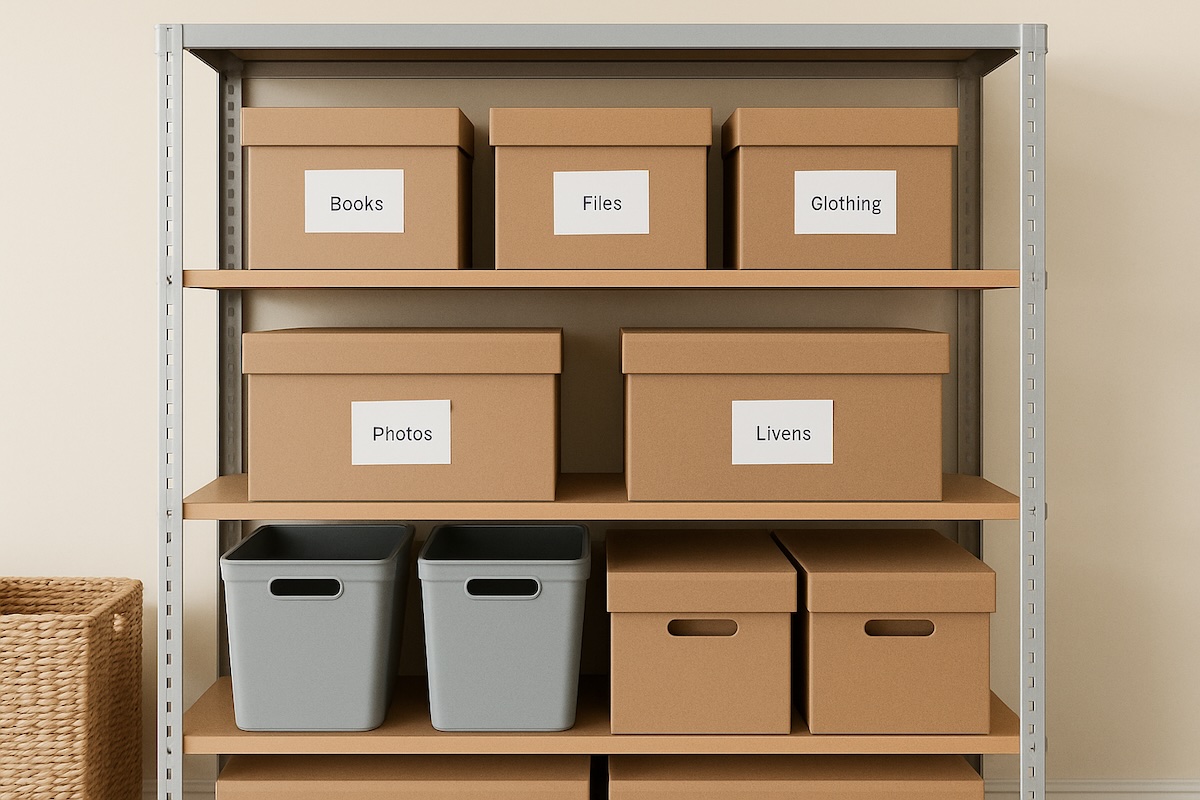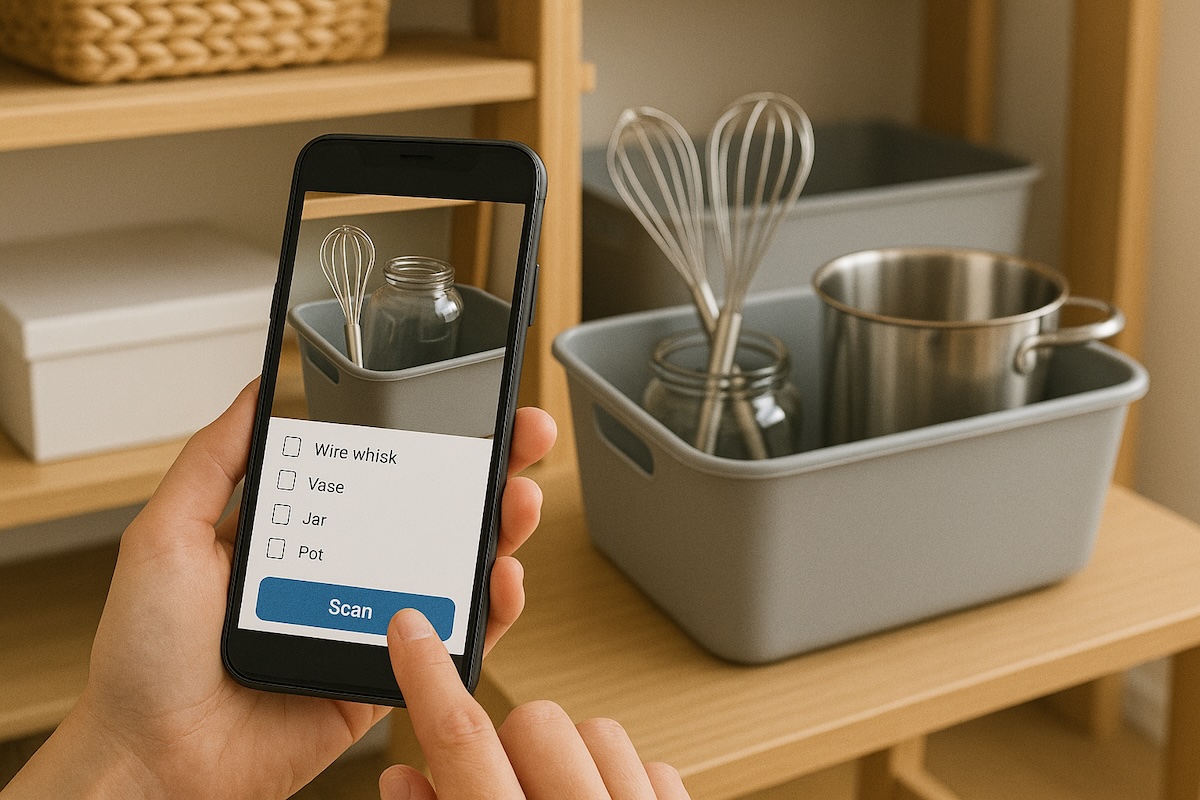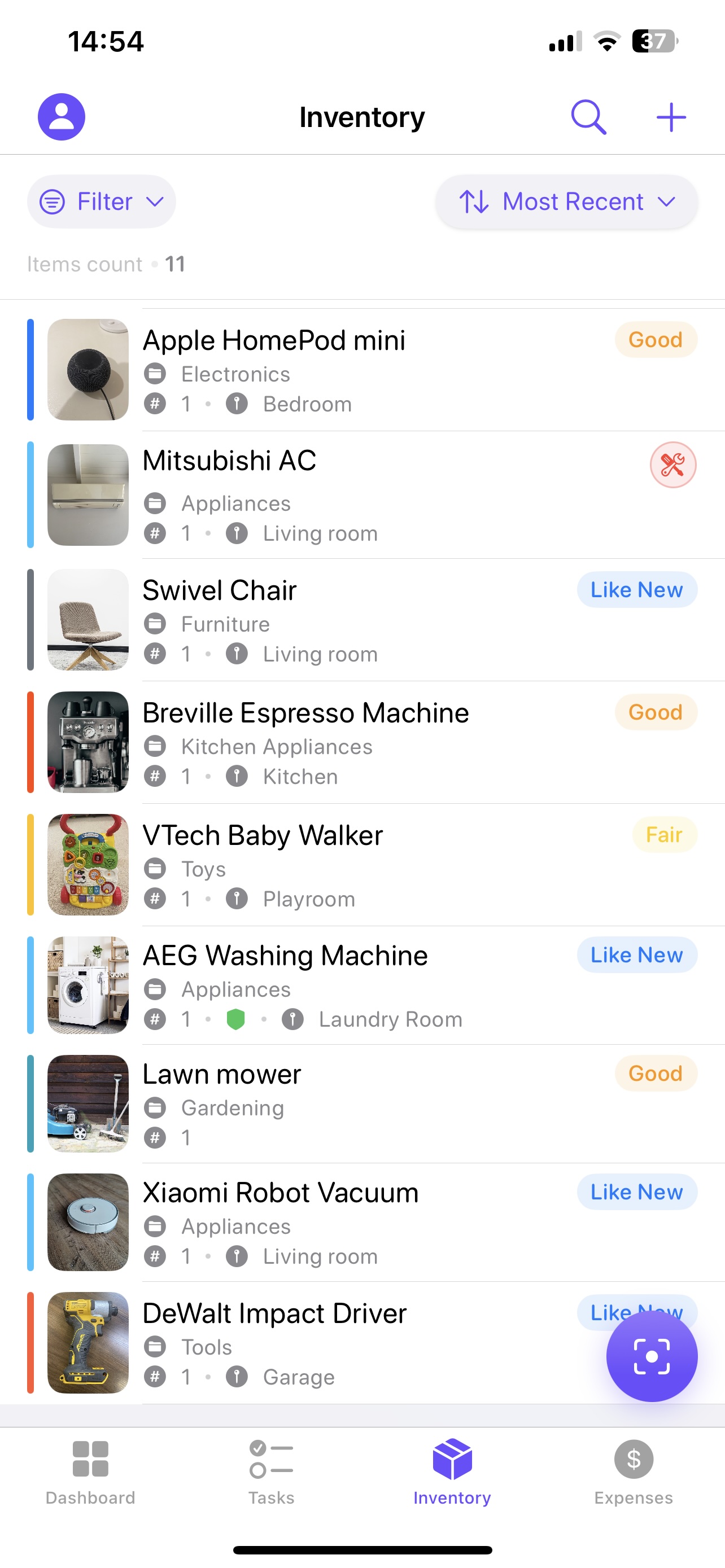The Complete Guide to Effective Home Inventory Management
Do you know exactly what items you have in your home? For most homeowners, the answer is a resounding "no." Creating and maintaining a comprehensive home inventory is one of the most valuable organizational tools you can develop, yet it remains an overlooked aspect of home management. This guide will walk you through the benefits, methods, and best practices for creating an effective home inventory system.

Why Home Inventory Management Matters
Insurance Claim Protection
When disaster strikes—whether it's a fire, flood, theft, or other unexpected event—having a detailed inventory of your possessions is invaluable for insurance claims. Without proper documentation, you risk:
- Forgetting items when filing claims
- Being unable to prove ownership
- Receiving insufficient reimbursement
- Experiencing delays in claim processing
According to insurance industry experts, homeowners with detailed inventories receive settlements up to 30% higher than those without proper documentation.
Financial Awareness
A home inventory gives you a clear picture of your assets:
- Understand the total value of your possessions
- Identify if you're under or over-insured
- Track the depreciation or appreciation of valuable items
- Budget more effectively for replacements or maintenance
Reduced Duplicate Purchases
How many times have you bought something only to discover you already had it hidden away somewhere? A well-maintained inventory helps you:
- Know what you own before shopping
- Find items quickly when needed
- Avoid unnecessary duplicate purchases
- Save money and reduce clutter
Organization and Peace of Mind
Perhaps the most immediate benefit is the mental clarity that comes from knowing what you have and where it's located:
- Reduce the stress of searching for misplaced items
- Plan home organization more effectively
- Simplify moving or relocating
- Feel more in control of your living space
Creating Your Home Inventory System
Start Small and Build Gradually
The prospect of cataloging every item in your home can feel overwhelming. Instead:
- Begin with one room or category (electronics, jewelry, etc.)
- Schedule regular sessions to add more items
- Focus on high-value items first
- Add everyday items as you have time
What to Document for Each Item
For comprehensive protection and organization, record:
- Item description and category
- Make, model, and serial number (when applicable)
- Purchase date and price
- Current estimated value
- Receipt or proof of purchase (if available)
- Photos or videos of the item
- Location in your home
- Warranty information and expiration dates
- Special features or notes

Documentation Methods
Digital Inventory Apps
Modern home inventory apps like Nestly offer significant advantages:
- AI-powered item recognition technology
- Cloud storage for safety and accessibility
- Automatic categorization systems
- Value tracking and insurance integration
- Barcode scanning capabilities
- Maintenance and warranty reminders
- Search functionality
Spreadsheet Systems
For the technically inclined, spreadsheets provide customization and control:
- Create custom categories and fields
- Sort and filter based on any parameter
- Calculate total values automatically
- Export data for insurance purposes
- Add hyperlinks to digital receipts or photos
Paper Documentation
Though less convenient, traditional documentation works for some:
- Use a dedicated notebook or binder
- Create sections for different rooms or categories
- Attach printed photos
- Store paper receipts in plastic sleeves
- Keep in a fireproof safe for protection
Best Practices for Maintaining Your Inventory
Regular Updates
A static inventory quickly becomes outdated:
- Schedule quarterly reviews
- Update immediately after major purchases
- Record gifts after birthdays and holidays
- Remove items when they're sold, donated, or discarded
- Adjust valuations for collectibles or appreciating assets
Strategic Documentation
Make your inventory work harder for you:
- Tag seasonal items with storage locations
- Cross-reference shared items (tools, kitchen gadgets)
- Note which items are covered by specific insurance riders
- Include model numbers for items that need replacement parts
- Record the locations of user manuals
Secure Storage
Protect your inventory documentation:
- Use password protection for digital inventories
- Enable cloud backup for all digital information
- Keep offline copies in at least two physical locations
- Consider a safety deposit box for critical documents
- Share access with a trusted family member
Specialized Inventory Categories
High-Value Collections
For collections like art, coins, stamps, or memorabilia:
- Include authentication documents
- Record provenance information
- Track market values periodically
- Document display or storage conditions
- Note appraisal details and dates
Electronics and Media
For technology items:
- Record serial numbers and activation keys
- Note account information (where appropriate)
- Track warranty expiration dates
- Document operating system and software versions
- List accessories and compatible devices
Home Maintenance Equipment
For tools and maintenance items:
- Record specific model numbers for replacement parts
- Note specialized uses or settings
- Track calibration requirements
- Document safety information
- Include maintenance history
Leveraging Technology for Better Home Inventory Management
Using AI for Inventory Creation
Modern apps like Nestly have revolutionized the inventory process:
- Take photos of items and let AI identify and categorize them
- Automatically extract serial numbers from images
- Evaluate item condition

Inventory Management for Life Changes
Moving to a New Home
A well-maintained inventory makes moving easier:
- Generate room-specific packing lists
- Track boxes and their contents
- Verify all items arrived safely
- Reorganize efficiently in your new space
- Update location information as you unpack
Estate Planning and Inheritance
Help your loved ones through difficult times:
- Identify items of sentimental value
- Document the intended recipient for specific items
- Record stories or history behind family heirlooms
- Provide clear information about valuable possessions
- Simplify the estate distribution process
Conclusion: The Ongoing Benefits of Home Inventory Management
Creating and maintaining a home inventory requires an initial investment of time and effort, but the benefits far outweigh the costs:
- Financial protection through proper insurance coverage
- Time saved searching for items
- Money saved avoiding duplicate purchases
- Stress reduction from improved organization
- Peace of mind knowing your possessions are documented
In today's complex world, where many households own hundreds or even thousands of items, proper inventory management isn't just a good idea—it's an essential part of responsible home ownership.
Ready to take control of your home inventory? Download Nestly today and discover how our AI-powered inventory tools can transform your home management experience in minutes, not days.
Download Nestly Now